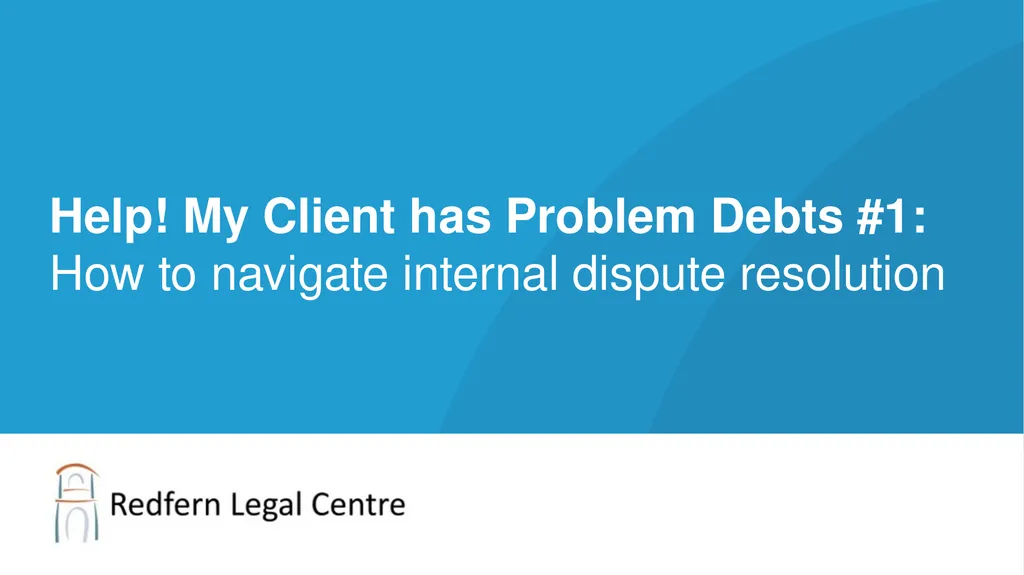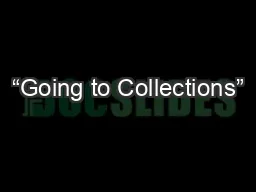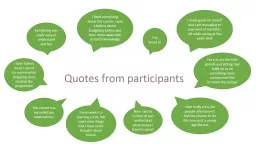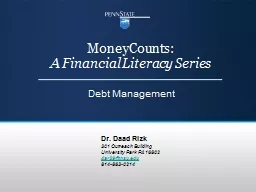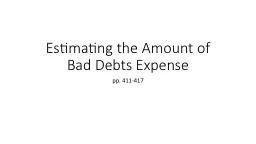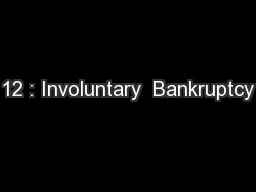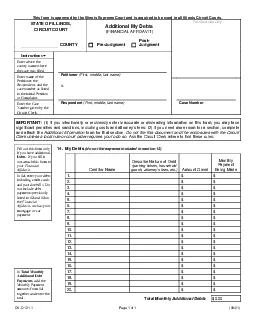Help! My Client has Problem Debts #1: How to
Author : alida-meadow | Published Date : 2025-06-23
Description: Help My Client has Problem Debts 1 How to navigate internal dispute resolution David Hofierka Credit Debt and Consumer Law Solicitor Redfern Legal Centre Outline Greg Story Identify Gather Information Determine the issues Assess
Presentation Embed Code
Download Presentation
Download
Presentation The PPT/PDF document
"Help! My Client has Problem Debts #1: How to" is the property of its rightful owner.
Permission is granted to download and print the materials on this website for personal, non-commercial use only,
and to display it on your personal computer provided you do not modify the materials and that you retain all
copyright notices contained in the materials. By downloading content from our website, you accept the terms of
this agreement.
Transcript:Help! My Client has Problem Debts #1: How to:
Help! My Client has Problem Debts #1: How to navigate internal dispute resolution David Hofierka Credit, Debt and Consumer Law Solicitor Redfern Legal Centre Outline Greg’ Story Identify Gather Information Determine the issues Assess Urgency Negotiate a resolution Greg’ Story: The Outcome Questions and where to get more information and advice Resources: rlc.org.au/training/resources/debts Internal Dispute Resolution (IDR) What is Internal Dispute Resolution? Referred to as IDR Internal process for consumers to resolve disputes quickly and directly Raises awareness of systemic problems Who has IDR procedures? Businesses that provide consumer credit and loans Insurance companies Utility providers 9 Greg Greg’ story 30 years old Disability support pension Living with parents in social housing $45,000 credit card debt to big bank Greg’ story (cont.) Greg comes to see you with a file full of bank statements spanning the last 10 years Repayments are unmanageable, stopping him from living independently Stress from debt is exacerbating his mental illness What would you do? Step 1: Identify Is there problem debt? Get a list of all debts the person is aware of Ask questions – shame or limited financial literacy can be barriers to disclosure of debts Rarely only one problem debt Who is making the claim? Assignment Agent Step 2: Gather Information Request information from the debtor Any written communication from the creditor or debt collector regarding the debt, eg. bills, emails, texts, letters, default notice, letter of demand, court document Information about any verbal communication from the debtor, eg. phone calls, in person Evidence of current income, eg. pay slips, Centrelink income statement, Tax return / Business Activity Statement (BAS) Request information from the debtor (cont.) Evidence of any health issues, .g. letter from GP, report from psychologist, test results summary Current living situation, eg. tenant, home owner, homeless Family situation, eg. any dependents , partner contributing to household expenses (or not contributing) The value of any assets, eg. motor vehicle, property, investments Request information from the creditor / debt collector #1 Ideally request in writing Get a signed written authority to release information (some creditors have specific authority forms) Letter should identify the debtor’s name, date of birth, account number / reference number (if known) Refer to “alleged debt” Request information from the creditor / debt collector #2 Request the following information: Copy of the original contract / agreement Most recent bill / invoice / claim Itemised account statement summary Payout figure
